Setting off early one weekend we decided to visit Nostell Priory on the outskirts of Wakefield in West Yorkshire. Approaching Wakefield we stopped off for breakfast rolls and coffee at the Union Rooms in Batley which is just around the corner from a Mill Outlet so we had a quick look in there before moving on. The Mill Outlet was very quiet and seemed quite lacklustre so with little or nothing to interest us we returned to our car and continued on to Nostell Priory. Car parking is £4 and entrance to the House and Gardens a further £11, but free of charge to National Trust members. As rain clouds threatened we decided to begin with a self guided tour of the Palladian mansion.

Nostell Priory was built on the site of a medieval priory and is an eighteenth century country house. It was home to the Winn family for over 300 years and is now run by the National Trust. Sir Rowland Winn spared no expense to create the sumptuous rooms that are now on display and employed both Robert Adam and Thomas Chippendale to design the interiors.
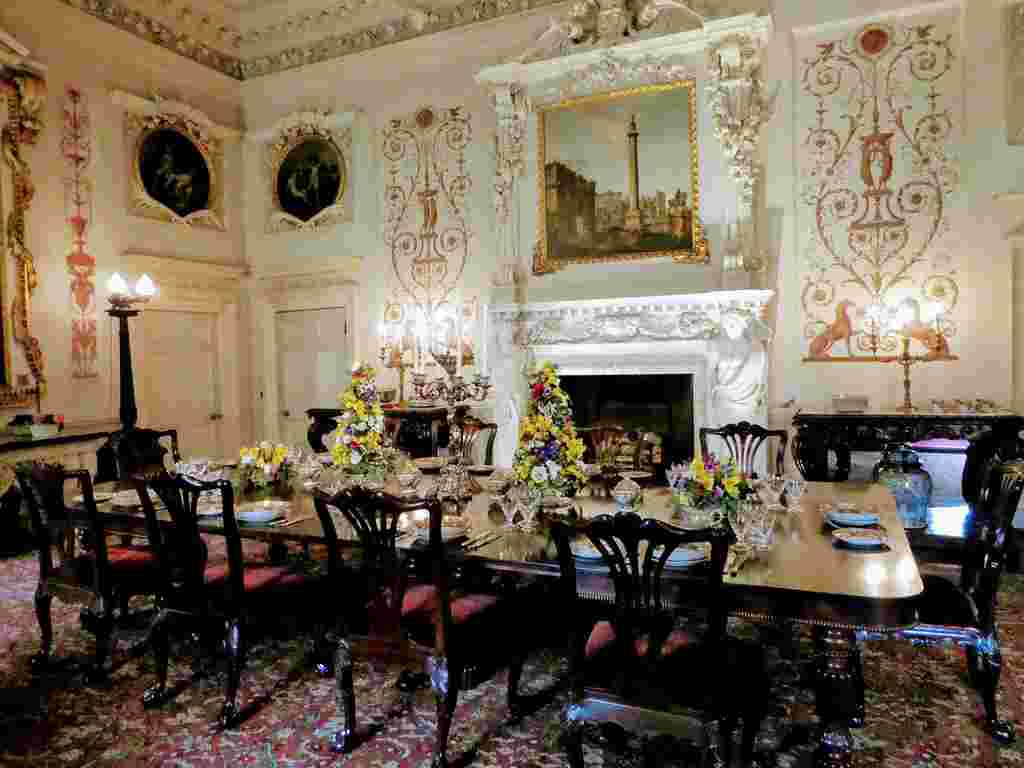
The rooms were all designed to create a grand impression with exquisite plasterwork and oil paintings by Hogarth and Kauffman. I liked the sumptuous state dining room with its hand painted wallpaper and the elegant table settings. It’s probably just as well that they employed servants with such a large table as otherwise it would have been difficult to pass dishes around.
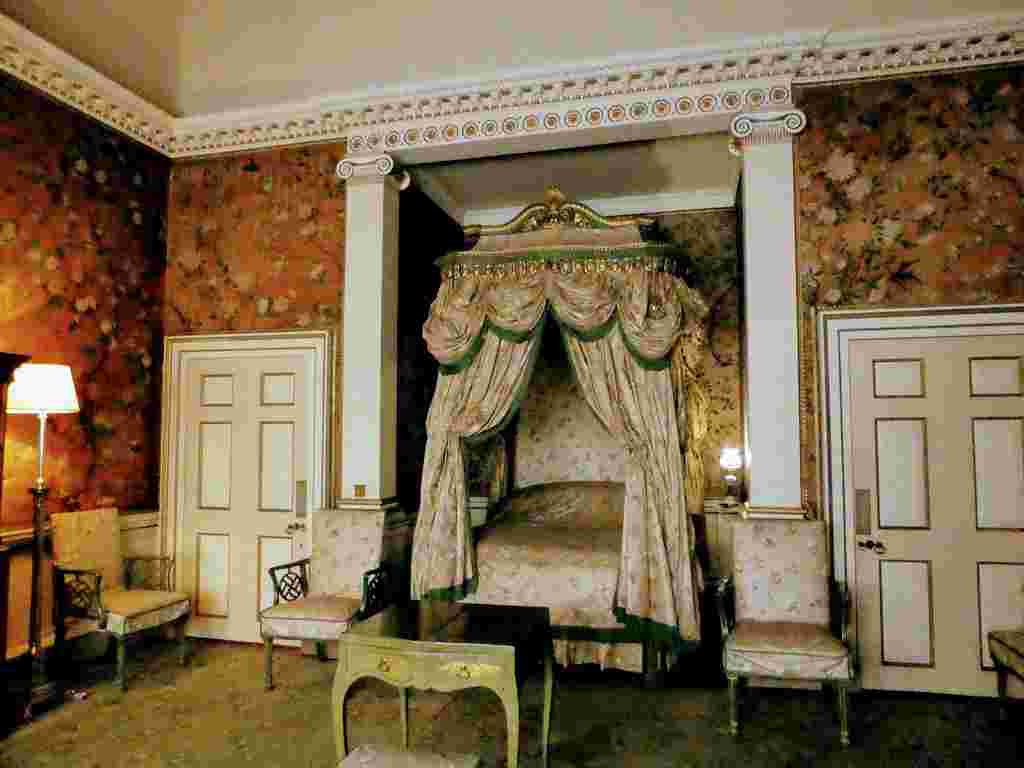
Mounting the sweeping staircase we were able to view several bedrooms and the one featured above I found particularly interesting. As you can see, the four poster bed is tucked into an alcove resulting in a narrow squeeze to get into bed. If I was sleeping in a bed like that I think I would be worried that the overhead canopy might collapse and fall on top of me during the night!
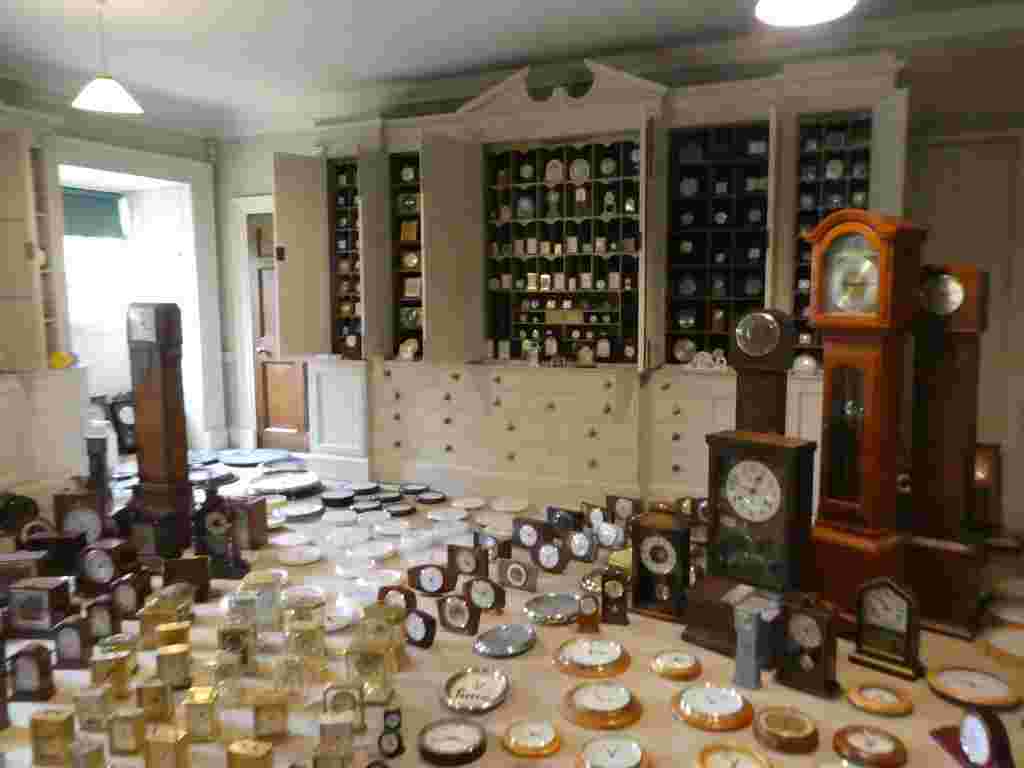
We wandered around at leisure with volunteers on hand in most rooms to answer questions and provide more detail. Laminated fact sheets are also available in each room for additional background information. Nostell Priory is home to one of the first handmade longcase clocks made by local inventor John Harrison. To celebrate its 300th birthday an installation of 2,000 ticking treasures through the ages ‘Harrison’s Garden’ was on display and interesting to view.
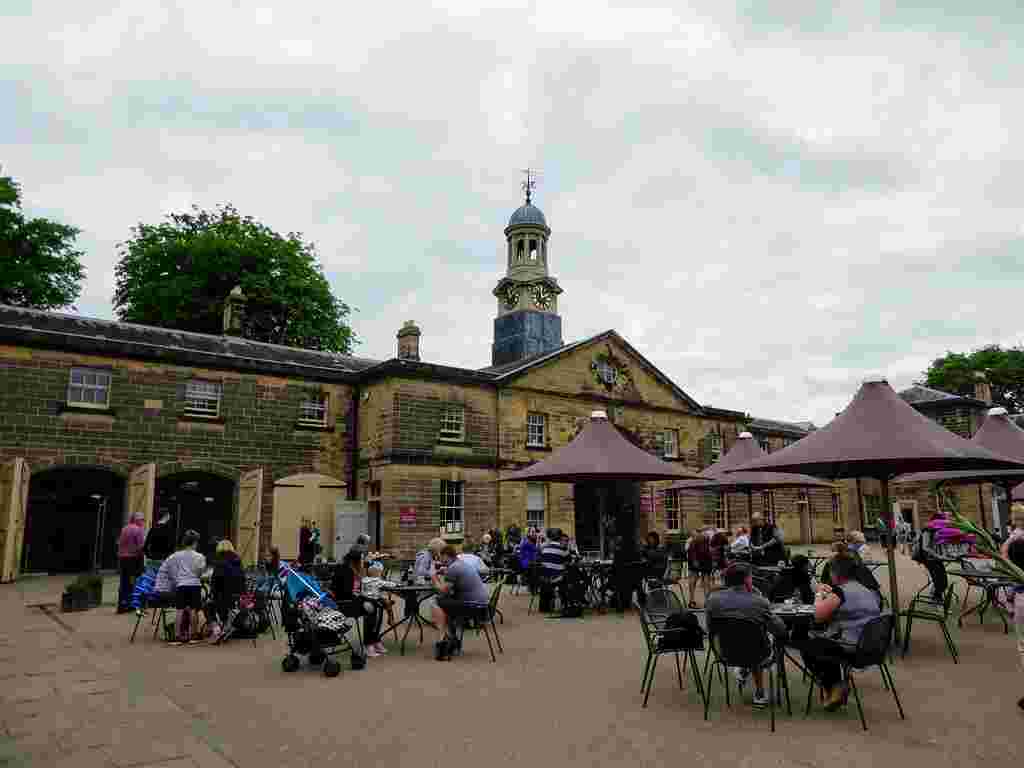
Located between the House and the Gardens is the visitor centre, stable courtyard cafe with indoor and terrace seating and a gift shop. It was very dull but warm enough to tempt visitors to sit outdoors. A silk screen printing workshop was attracting some school children whilst others were happily playing on the sweeping Priory lawns.
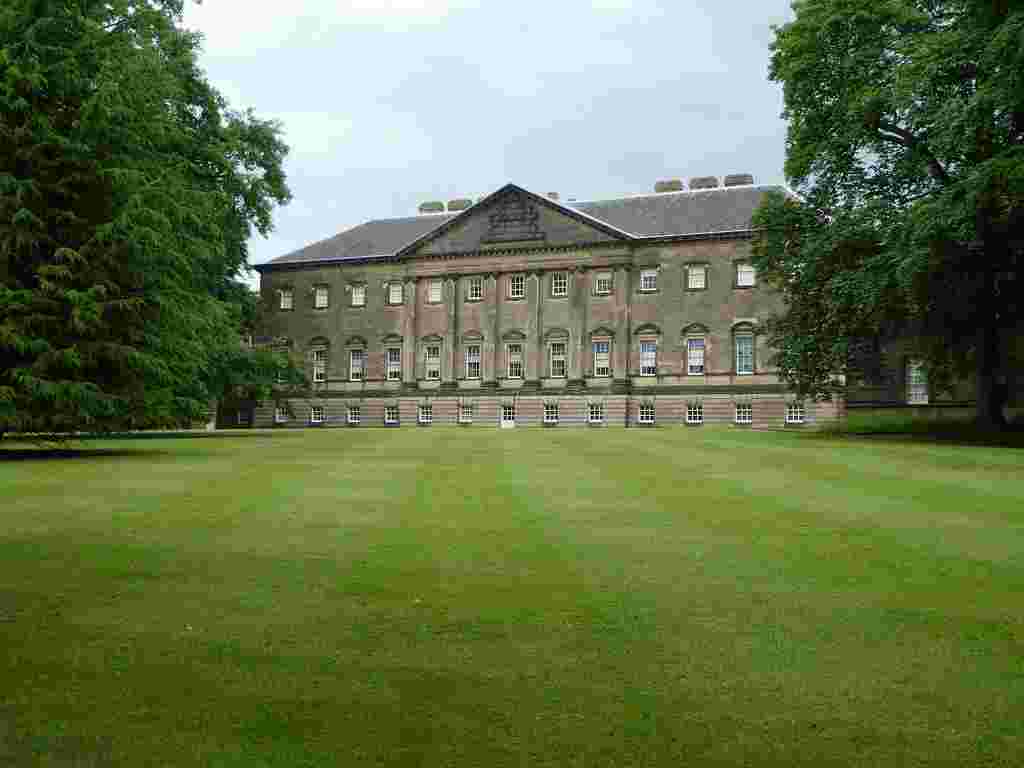
Leaving the stable courtyard we followed a signpost to ‘Lakeside Walks’ through the garden entrance. This footpath led us towards the rear of the house from where we caught our first glimpse of the lake. Passing through a small gateway the path continued onto a part of the grounds known as the Pleasure Garden. From the bottom of the slope we were able to see the boat house and lower lake.

A little further along we passed Druid’s Bridge before retracing our steps back to the house where we strolled through the flower gardens. The gardens were looking their best with the fragrant iceberg roses clinging steadfastly to the walls and below red, pink and white peonies bloomed along the edge of the footpath.
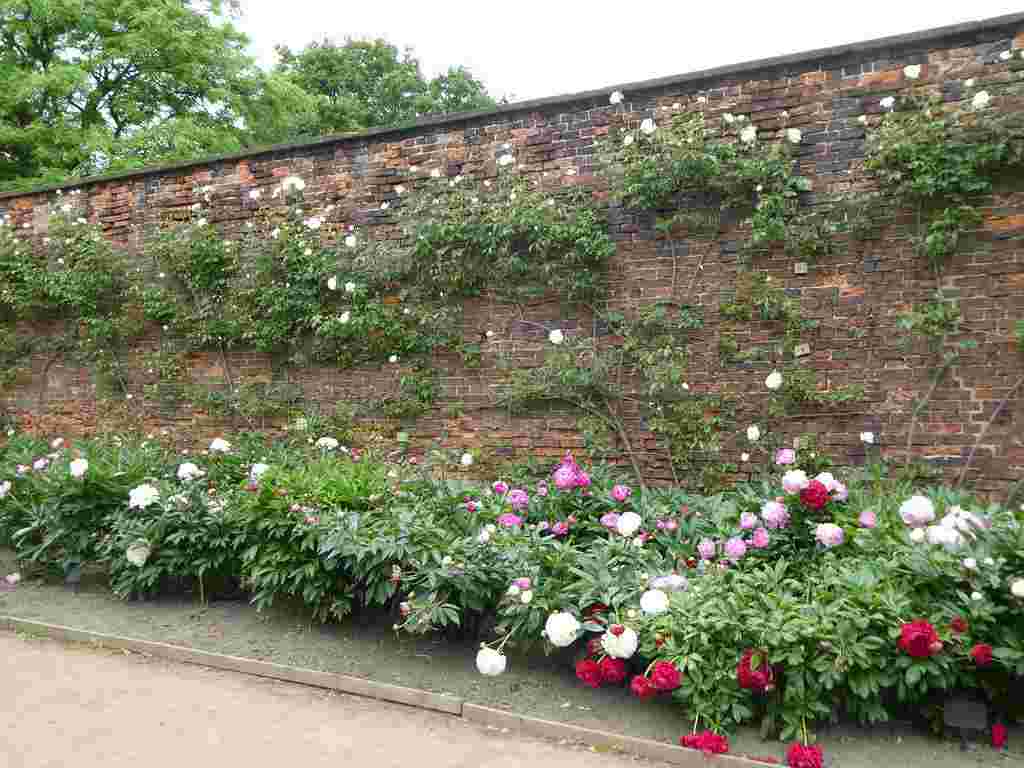
If you have enjoyed reading this post, you may also be interested in the following:
Andover and the Mottisfont Rose Garden
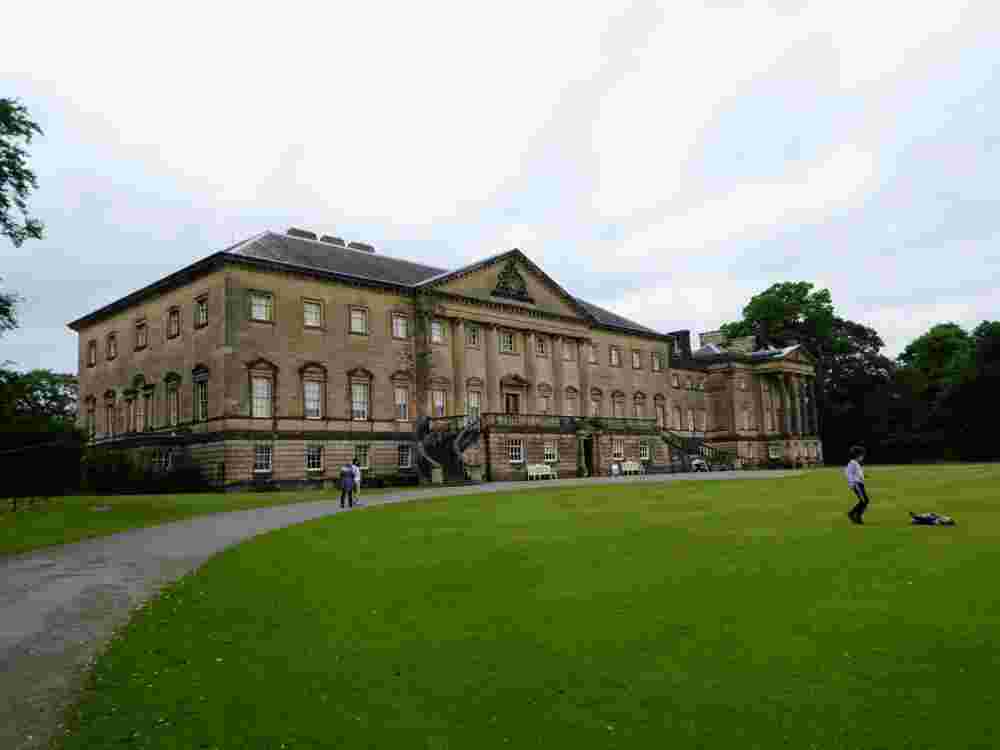

Leave a comment